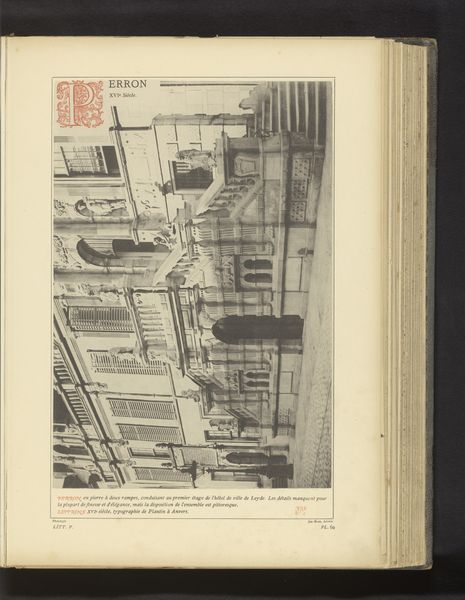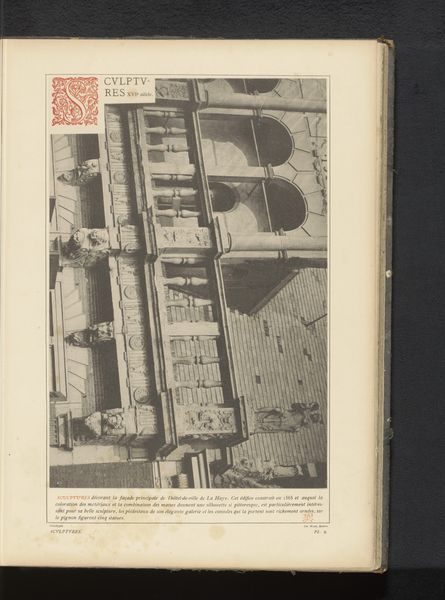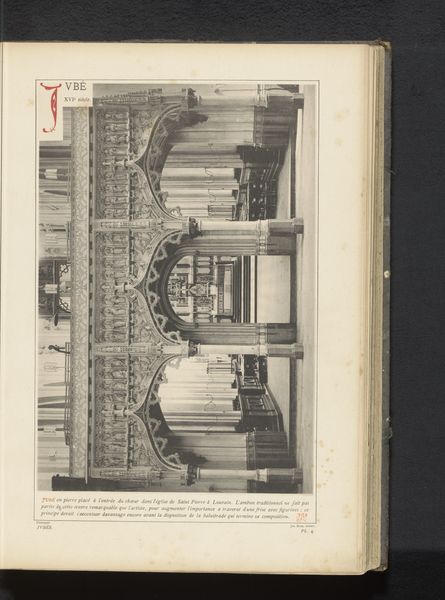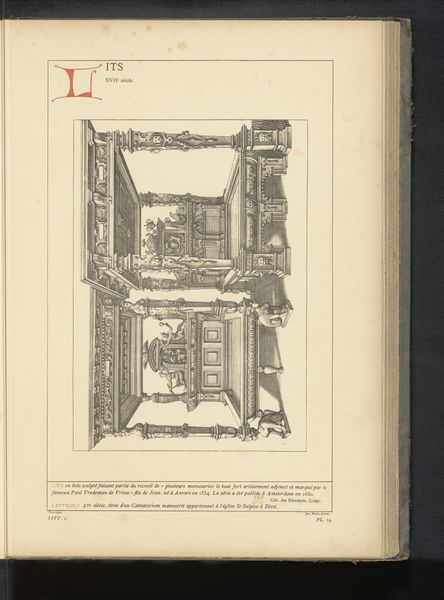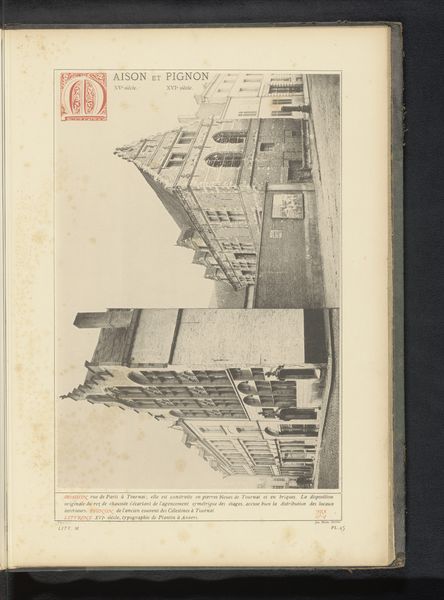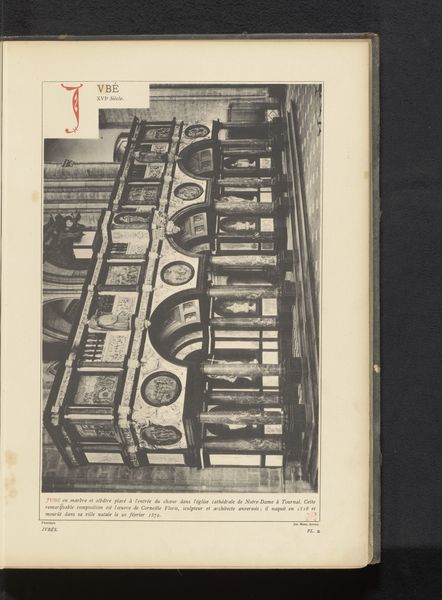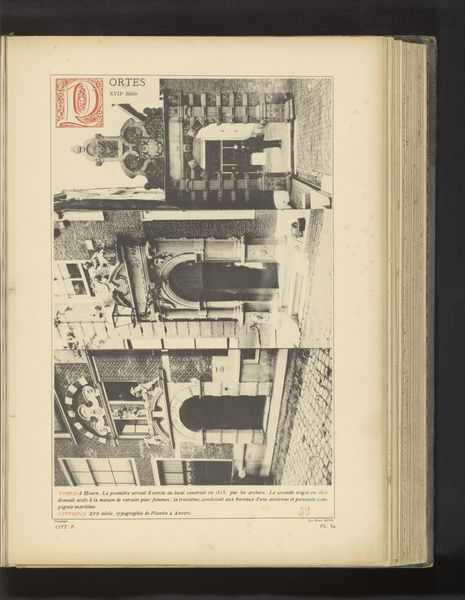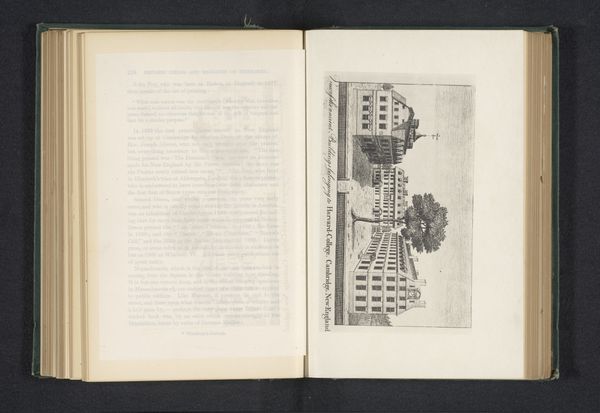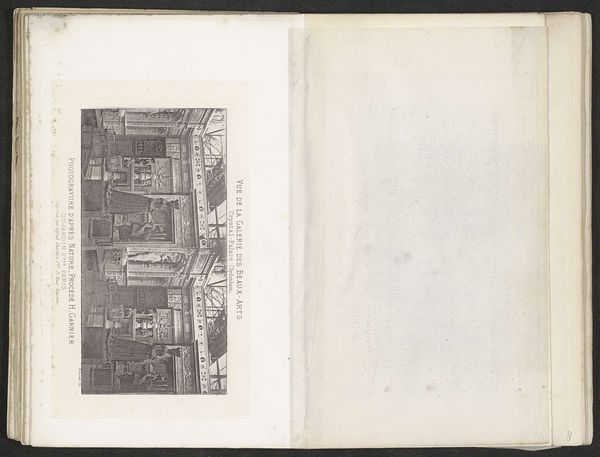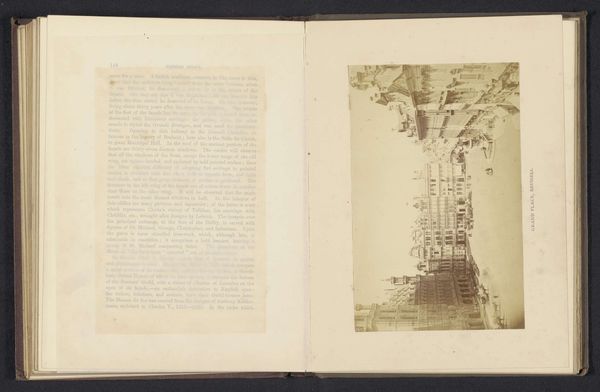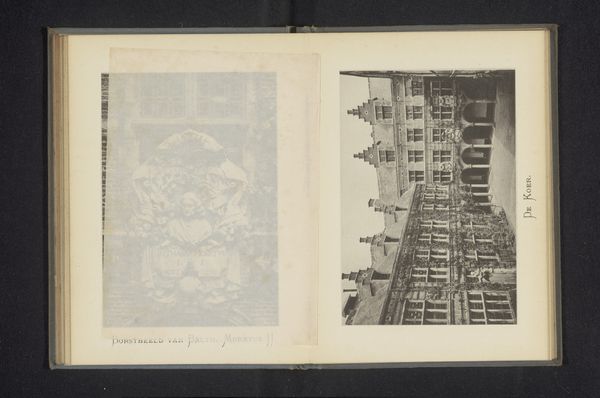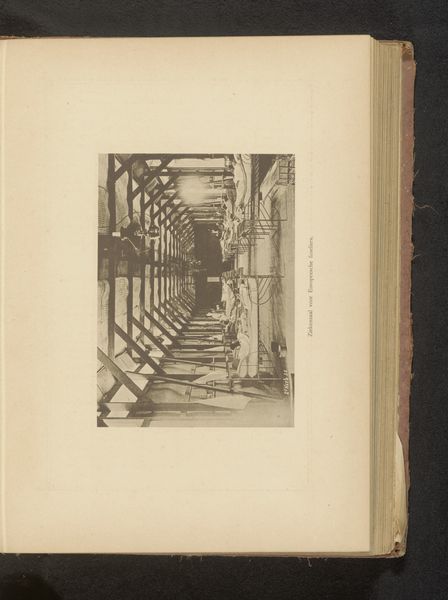
Reproductie van een prent van de binnenplaats van het Rubenshuis in Antwerpen door Jacques van Croes before 1880
0:00
0:00
Dimensions: height 237 mm, width 345 mm
Copyright: Rijks Museum: Open Domain
Curator: Before us is a print titled "Reproductie van een prent van de binnenplaats van het Rubenshuis in Antwerpen door Jacques van Croes," dating from before 1880. It captures the courtyard of Peter Paul Rubens’s house in Antwerp. Editor: It feels incredibly structured, almost architectural in its precision. There's a stillness to it, but also an intricate detailing that suggests careful labour. I am immediately struck by the strong geometric aspect of the structure's depiction. Curator: The Rubenshuis, as you know, was not merely a home, but a conscious statement. Jacques van Croes’s print gives us an intimate look at the symbolic meaning embedded in its design. Rubens sought to align himself with the classical tradition and ideas of Humanism. Editor: The materials of this home… stone, brick, mortar. Think of the craftspeople involved, their labor essential to realizing Rubens' vision of his place in society and culture. How would their perspective shift our understanding? Curator: Absolutely. Considering these spaces, and particularly how Rubens designed and used them, provides insight into the negotiation of status, and intellectual exchange during the Baroque era. Rubens intended to revive the grandeur and ideals of antiquity in a rapidly modernizing Antwerp. The print, in this way, can give us insights into societal aspirations and a desire to cultivate an intellectual, artistic identity. Editor: And how these types of images become commodities themselves. This print exists as a *reproduction*, not the original building— a transformation of labor, of artistic vision, into something portable, and able to reach wider audiences. The context of how a work is made informs how its message spreads. Curator: The historical distance, I think, allows for an investigation of the layered contexts of production. By seeing it this way, we open possibilities for reinterpretation, for uncovering marginalized or obscured narratives connected with it. Editor: Looking closely at an artwork like this really grounds you in its tangible past, yet it is the intersection of class, work, and capital that interests me when interpreting its effect. Curator: Considering van Croes’s image and thinking of the social and historical context reveals new paths for analysis. Editor: For me, looking at process and materials brings depth to its social history.
Comments
No comments
Be the first to comment and join the conversation on the ultimate creative platform.
